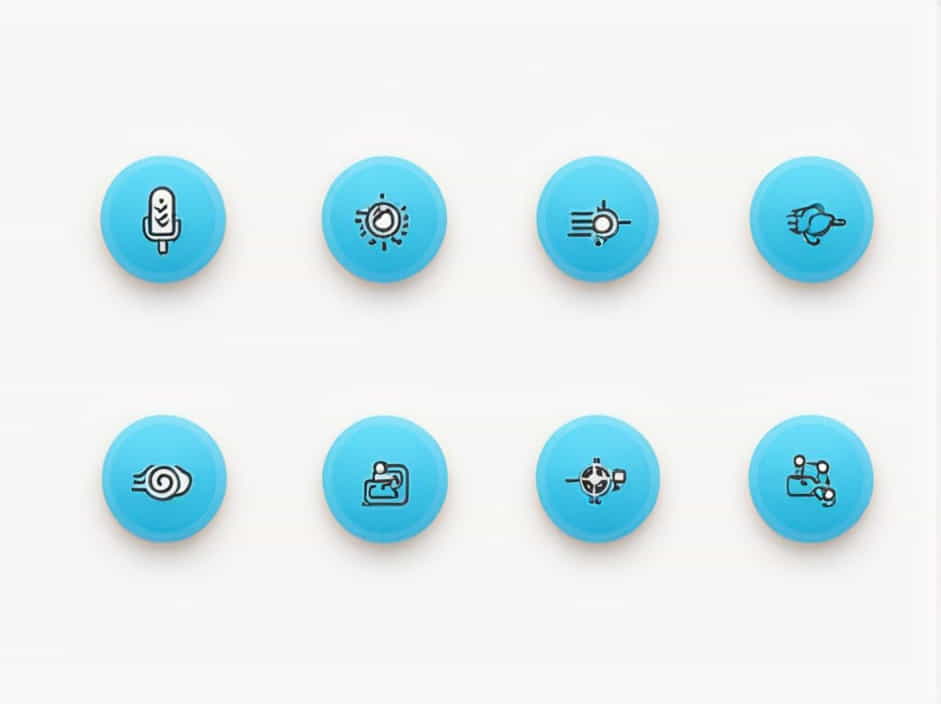In modern communication systems, digital modulation plays a crucial role in transmitting information efficiently and reliably. Unlike analog signals, digital signals are discrete in nature, meaning they exist in specific states rather than continuous variations. These discrete signals are essential for wireless communication, data transmission, and networking.
This topic explores which signals are discrete and generated by digital modulation, how digital modulation works, and its importance in modern technology.
Understanding Discrete Signals
What Are Discrete Signals?
A discrete signal is a type of signal that takes on specific values at distinct time intervals. Unlike continuous signals, which vary smoothly, discrete signals are typically represented by binary values (0s and 1s) or a set of finite levels.
Discrete signals are commonly used in:
-
Digital communications (Wi-Fi, Bluetooth, 5G)
-
Data transmission (computer networks, satellite communication)
-
Signal processing (image and audio processing)
Digital modulation techniques are responsible for generating these discrete signals, ensuring efficient transmission of information over various communication channels.
How Digital Modulation Generates Discrete Signals
What Is Digital Modulation?
Digital modulation is the process of modifying a carrier wave (such as radio waves) using discrete digital signals to transmit data. It converts binary data into signal waveforms that can be sent through different transmission mediums, such as air (wireless) or cables (wired networks).
Why Use Digital Modulation?
-
Higher efficiency and reliability compared to analog modulation.
-
Reduced noise interference, making data transmission clearer.
-
Better security and encryption, ensuring data privacy.
-
Supports multiple users simultaneously in wireless networks.
Types of Digital Modulation and the Discrete Signals They Generate
1. Amplitude Shift Keying (ASK)
ASK is a digital modulation technique where the amplitude of the carrier wave changes based on digital input. The signal can be in either a high or low amplitude state, representing binary 1 or 0.
Discrete Signals Generated by ASK:
-
Two distinct amplitude levels (high and low).
-
Used in fiber optic communication, RFID systems, and remote controls.
2. Frequency Shift Keying (FSK)
FSK modulates data by changing the frequency of the carrier wave. It assigns different frequencies to represent binary 0 and 1, making it resistant to noise.
Discrete Signals Generated by FSK:
-
Two or more distinct frequency levels.
-
Commonly used in modems, radio telemetry, and Bluetooth technology.
3. Phase Shift Keying (PSK)
PSK alters the phase of the carrier wave to represent digital data. Each phase shift corresponds to a discrete symbol, ensuring efficient transmission.
Types of PSK and Their Discrete Signals:
-
Binary PSK (BPSK): Two distinct phase states (0° and 180°).
-
Quadrature PSK (QPSK): Four discrete phase states (0°, 90°, 180°, 270°).
-
Higher-order PSK (e.g., 8-PSK, 16-PSK): More phase states for increased data rates.
PSK is widely used in Wi-Fi, satellite communication, and 4G/5G networks.
4. Quadrature Amplitude Modulation (QAM)
QAM is a combination of amplitude and phase modulation. It uses multiple discrete amplitude and phase levels to increase the data rate.
Discrete Signals in QAM:
-
16-QAM: 16 distinct states (amplitude-phase combinations).
-
64-QAM, 256-QAM: Higher discrete states for faster data transmission.
QAM is used in digital TV broadcasting, broadband internet, and mobile networks.
5. Minimum Shift Keying (MSK)
MSK is a form of continuous-phase frequency shift keying, which minimizes abrupt changes in frequency. It generates smooth but discrete frequency shifts.
Applications:
-
GSM (Global System for Mobile Communications) for mobile phones.
-
Satellite and aerospace communications.
Applications of Discrete Signals in Digital Modulation
1. Wireless Communication
Discrete signals generated by digital modulation are crucial for Wi-Fi, Bluetooth, and mobile networks (4G, 5G). Techniques like QPSK and QAM enable high-speed and reliable data transmission.
2. Satellite Communication
Satellite systems use PSK and QAM to ensure robust data transmission across long distances, overcoming signal degradation.
3. Broadcasting Services
Digital TV and radio broadcasting rely on QAM and FSK to provide clear and interference-free signals.
4. Computer Networks
Wired and wireless network devices use digital modulation techniques to ensure smooth data exchange between routers, servers, and computers.
5. Internet of Things (IoT)
IoT devices rely on low-power digital modulation (such as FSK and MSK) to communicate efficiently without draining battery life.
Advantages of Digital Modulation in Discrete Signal Generation
1. High Noise Immunity
Digital signals are less affected by noise compared to analog signals, ensuring more reliable communication.
2. Efficient Bandwidth Utilization
Advanced digital modulation techniques like QAM allow more data to be transmitted using less bandwidth.
3. Scalability for High-Speed Communication
Digital modulation enables high-speed internet, mobile networks, and streaming services with minimal latency.
4. Better Security and Encryption
Discrete signals support secure encryption methods, making digital communication safer against cyber threats.
Discrete signals play a fundamental role in digital communication, enabling fast, secure, and efficient data transmission. Digital modulation techniques like ASK, FSK, PSK, and QAM generate these discrete signals, powering technologies such as Wi-Fi, mobile networks, satellite communication, and IoT.
With continuous advancements in 5G, artificial intelligence, and IoT, the demand for reliable discrete signals and digital modulation will only grow. Understanding these concepts helps us appreciate how modern communication systems function and evolve.
